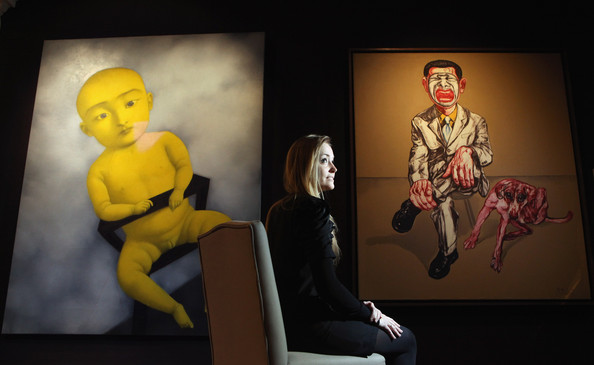
In recent years, more and more prominent figures, large organisations and capital investment firms have been wading in art investment, works of art have became the third-largest investment key area after stocks and real estate. Art’s increasing value making it a profitable investment has captured the world’s attention, but it also marks an important development of the cultural industry worldwide.
Data showed that after 2009’s global economic crisis, the world’s niche group of wealthy people’s assets shrink by 20% – 24%, but art as an investment rose 1% — %. World-class art collectors once said, “ Undeniably, art is the world’s most valuable item, the average stock’s appreciation rate is 40% whereas the average rate of appreciation of art is 95%.”
Over the past decade, the average increase of Chinese art is an astonishing 19%. In the next five to ten years, Chinese art will yield more than stocks and real estate so investing in art is still the best way to finance and plan your cash.
Being one of the key economic prime hubs in today’s world, China is moving at an positive and moderate pace into the era of universal art collecting among the population. But for the ordinary person or firms just getting involved in art investment, their understanding of the market and various attributes are not yet deep. Due to the lack of professional knowledge and investment skills, they are more prone to follow the market’s certain formations or fall into the trend of mere speculation.
On the whole, the art collecting and investing industry is still in its fresh stage, but with the resource-rich Chinese history and culture, art treasures handed down from ancient times, incredible amount of modern works of art, to the passion for public art collecting and art investment knowledge rising increasingly, China is destined to become a great power with a high demand for and a wide collection of high-end art on hand. Naturally, with the strong formation of its market, Chinese contemporary artworks’ prices will rise and run at a higher price range internationally. Both the physical prosperity and spiritual wealth of the China’s cultural industry will thus evolve subsequently.
Based on the past two years’ movement of the Chinese art market, engaging in art as an investment is far greater than just merely ‘collecting’. This is a huge difference from traditional ideas of buying art and is a fundamental attribute which showcased the recognition and awareness people have on the economic value of a work of art. While collecting, people also pay strong attention to the profitable returns of art at the same time, blurring the boundaries between art as a collection and as an investment channel. ‘Using an Investment to grow a Collection’, has become a striking & proven method of financial management under the new ‘circumstance’ of art collecting.
Art collectors now merge art collecting and financial management in one, commonly known as the “graceful investment” behavior. For the art market wise, irregardless of their personal collecting factors, the more people involve, the more broad-based the market becomes. With a strong mass base support, the art market will have a steady stream of power thus facilitating faster development.
With the trend of investment in art collecting, individual collectors’s increase investment in art is set to become a major force in the market. Any industry cannot do without a wide ‘fanbase’, so to speak. Although minority groups of high consumption can bring a temporary prosperity of the industry, but in terms of long-term, sustainable development is based on the mass of the population, the so-called “Many hands set a stronger flame” ideology.
